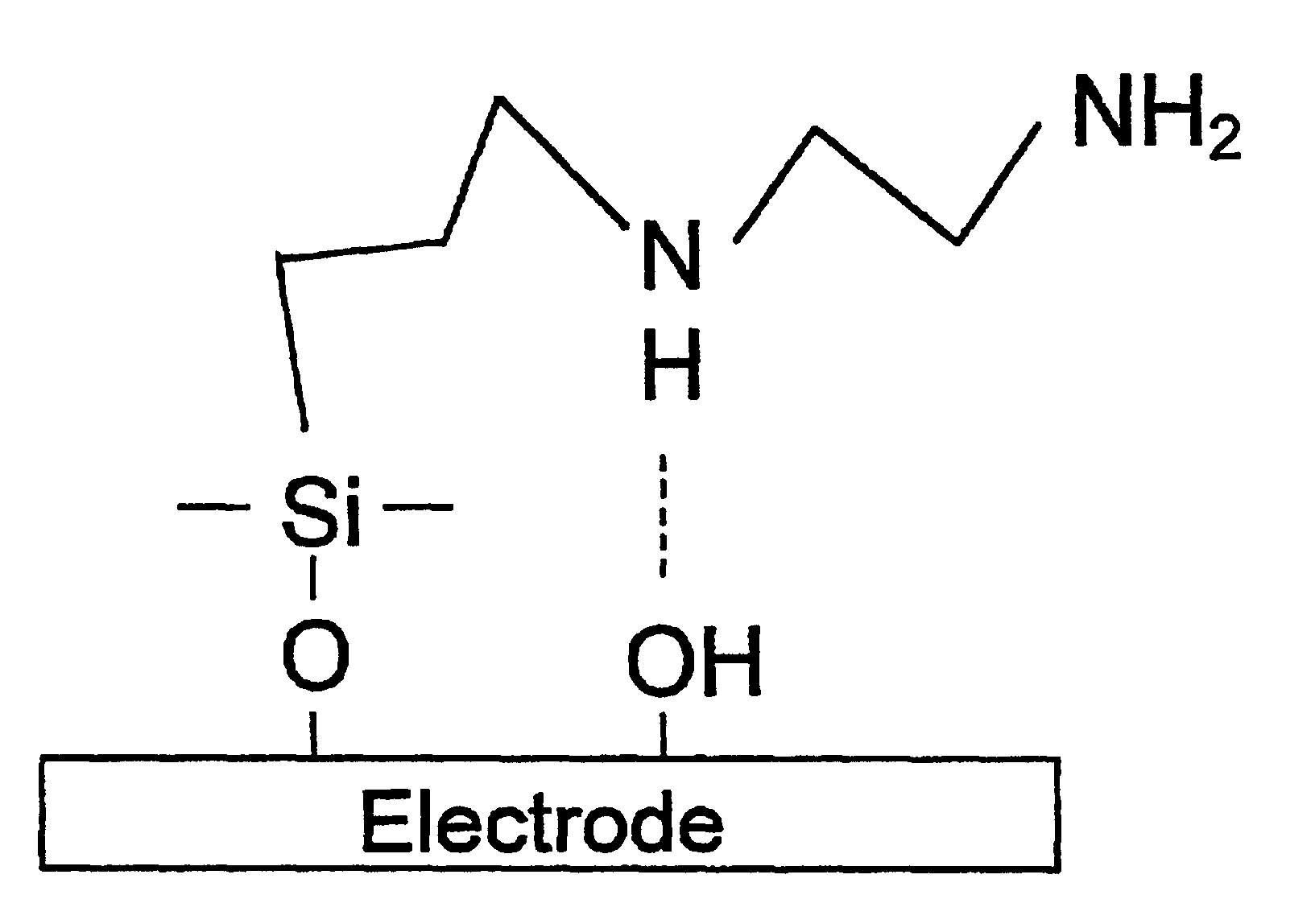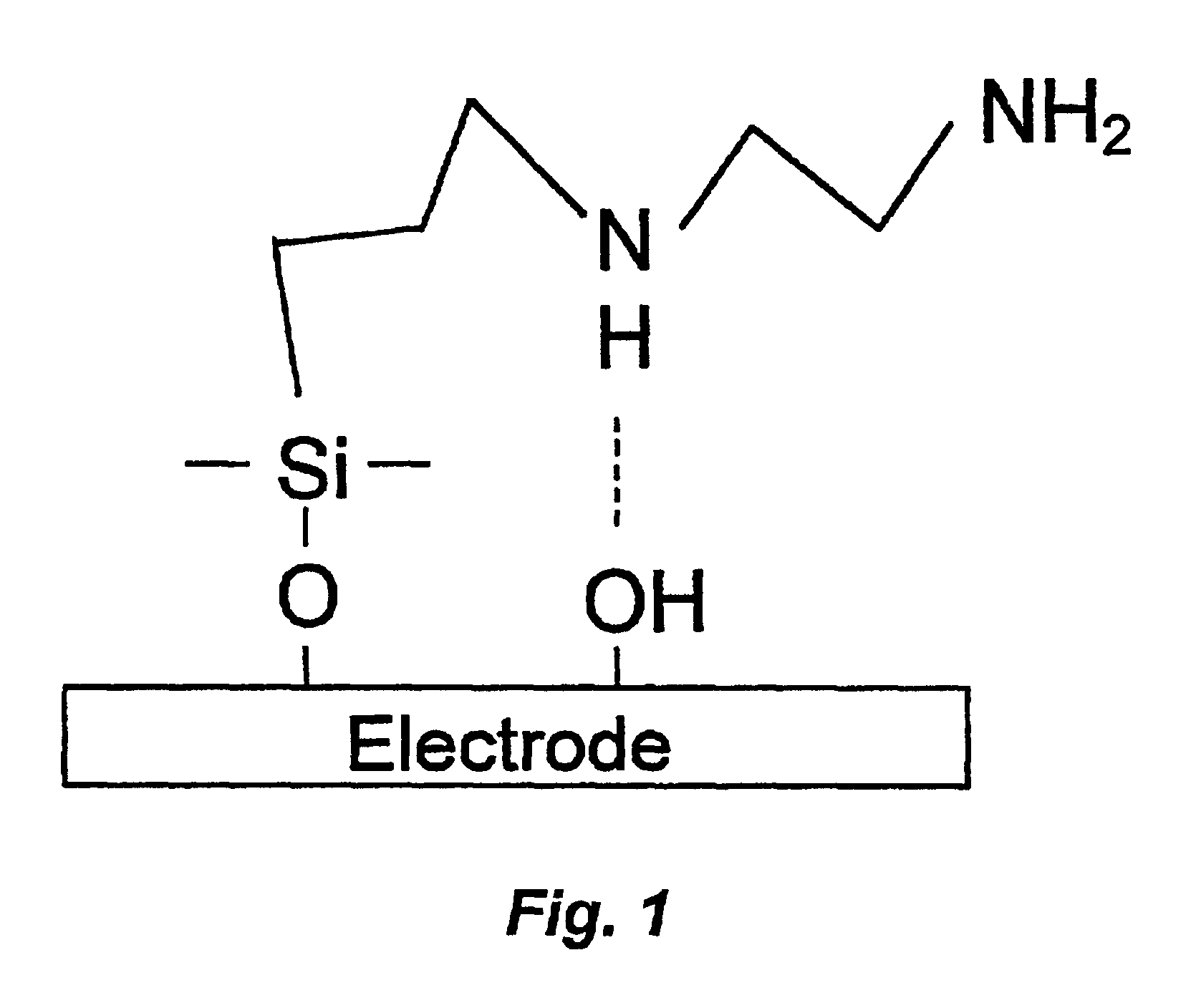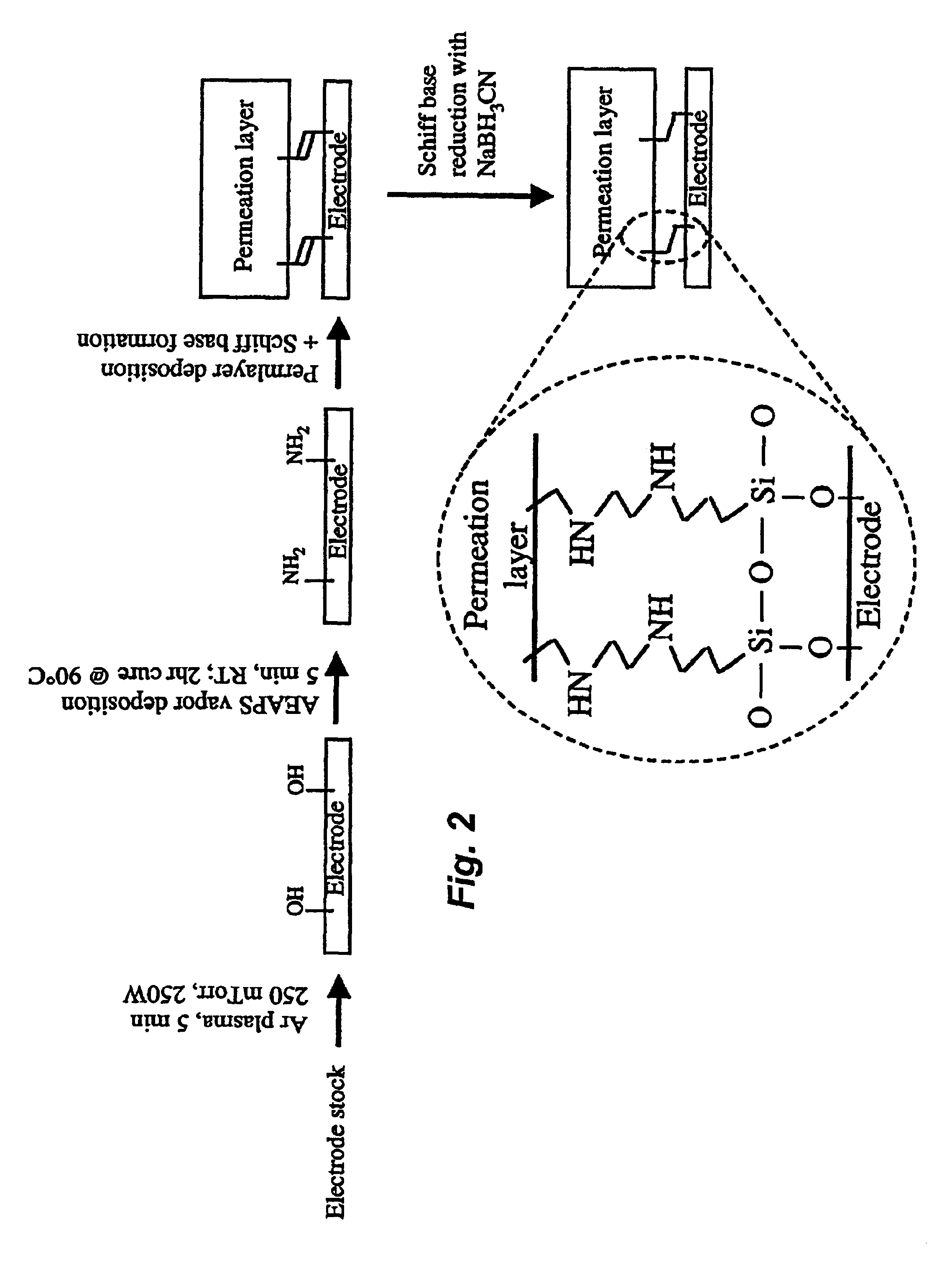Platinum silicide permeation layer device with microlocations
a technology of permeation layer and microlocation, which is applied in the direction of liquid gas reaction process, biomass after-treatment, nucleotide library, etc., can solve the problems of permeation layer peeling (lifting), loss of consistency in permeation layer performance, and prone to separation or ‘delaminate’ of membranes from the electrode surface, etc., to achieve robust permeation layer, increase current density, and increase the effect of transport efficiency of charged molecules
- Summary
- Abstract
- Description
- Claims
- Application Information
AI Technical Summary
Benefits of technology
Problems solved by technology
Method used
Image
Examples
example 1
Agarose permeation layer matrix was attached to a PtSi electrode microchip following deposition of either APS or AEAPS by one of two methodologies.
APS and AEAPS were deposited by exposure of the chip to a 0.1 wt % silane / dry MeOH solution for 1 hour at room temperature. The chips were rinsed in EtOH and cured at 90° C. for 1 hour. In parallel experiments, APS and AEAPS linkers were deposited onto microchips by a vapor of neat silane in humid atmosphere for 5 min. at room temperature followed by a two hour cure at 90° C.
After the agarose permeation layer was attached, the microchips were subjected to electronic assays wherein the electrodes were biased with three direct current (DC) impulses for 2 minutes each at 200, 500, 700, and 1000 nAmps / 80 μm pad (i.e., 0.04, 0.10, 0.14 and 0.20 nA / μm2) using a model 236 Source-Measure unit (Keithley Instruments Inc., Cleveland, Ohio). Following the set of three DC impulses, the electrodes were biased with a sequence of 150 negative pulses, eac...
example 2
In this example, delamination of the permeation layer from the electrode was tested using a multilayer permeation layer wherein the layers were applied using spin coating techniques then reacted to cause the linking moieties to covalently bond the layers together and to the electrode.
Specifically, microchips having PtSi electrodes were cleaned with oxygen plasma for 10 minutes followed by argon plasma for 10 minutes. AEAPS was then vapor-deposited for 5 minutes followed by curing at 90° C. under vacuum. Subsequently, a first layer solution comprising 2.5% glyoxylagarose solution (NuFix) which had been stirred for 10 minutes at room temperature then boiled 7 minutes followed by filtering at 1.2 μm into the ASC device reservoir at 65° C., was spin-deposited onto the microchips with an automatic spin-coating device (ASC). Following deposition of the first layer, a second layer, comprising streptavidin (Scripps Laboratory, San Diego) at 5 mg / ml in 10 mM sodium phosphate, 250 mM NaCl (pH...
example 3
In this example, data is presented showing that the covalent attachment method of the invention using PtSi electrodes, agarose and aminopropylsilanes also protects against delamination of the permeation layer under alternating current conditions. Here, Pt and PtSi microchips bonded to the permeation layer with AEAPS were tested using two pulsed biasing protocols.
Both protocols were carried out using 50 mM L-Histidine buffer. Specifically, in protocol A, the microchips were biased at +800 nA / pad (0.16 nA / μm2) for 38 milliseconds (ms), −800 nA / pad for 25 ms, cycled for a total of 25 seconds using 3 pads each pulse. In protocol B, the microchips were biased at +1.6 μA / pad (0.32 nA / μm2) for 19 ms, −1.6 μA / pad for 12 ms, and cycled for a total of 14 seconds each on 3 pads addressed simultaneously. Images were taken using an INM 100 confocal microscope (Leica).
FIG. 6A shows Pt chips that were biased using protocol A, followed by 0, 4, 8, 12 or 16 repeats of protocol B. The images show tha...
PUM
| Property | Measurement | Unit |
|---|---|---|
| Current density | aaaaa | aaaaa |
| Current density | aaaaa | aaaaa |
| Current density | aaaaa | aaaaa |
Abstract
Description
Claims
Application Information
 Login to View More
Login to View More - R&D
- Intellectual Property
- Life Sciences
- Materials
- Tech Scout
- Unparalleled Data Quality
- Higher Quality Content
- 60% Fewer Hallucinations
Browse by: Latest US Patents, China's latest patents, Technical Efficacy Thesaurus, Application Domain, Technology Topic, Popular Technical Reports.
© 2025 PatSnap. All rights reserved.Legal|Privacy policy|Modern Slavery Act Transparency Statement|Sitemap|About US| Contact US: help@patsnap.com



